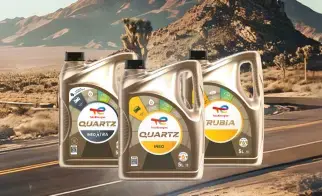How to check and top up your car’s coolant
You shouldn’t drive with a low level of engine coolant; it keeps your engine from overheating in hot weather and freezing up in sub-zero temperatures. But for it to keep safeguarding components and performance, there needs to be enough of it in the cooling system.
Why is my car's coolant level low?
Leaks in the cooling system
If your car’s coolant level is dropping, it is almost always due to leaks in the cooling system – the hoses, radiator or radiator cap, for example. Symptoms of this can be a rising temperature gauge, a sweet odour (the smell of antifreeze), problems with your car’s heater or increased fuel consumption.
Simply topping up your coolant should never be used as a stop-gap remedy to leaks, so if your coolant level drops, always visit a mechanic to get it repaired.
Insufficient coolant top-up
Sometimes, coolant levels can be low due to too little coolant being put into the reservoir. In this case, you should top up your coolant as soon as possible to avoid engine damage.
How to top up your engine coolant
-
Before you start, park on a level surface and wait for a few hours until the engine is fully cold – if it’s hot, pressurised water can dangerously erupt from the reservoir cap when it’s unscrewed.
-
Find the coolant reservoir: The location should be in your car handbook, as well as information on the correct type of antifreeze or coolant for your vehicle.
-
Check the coolant level: The coolant reservoir has minimum and maximum markers – the coolant level should be in between these lines.
-
Adjust the coolant level: If the level below minimum, top it up. Above maximum, and you should immediately siphon out the excess.
-
Mix the coolant: If you are not using pre-mixed coolant, mix the correct antifreeze with distilled water as per the manufacturer’s instructions 50-50 is a common measure, with 70-30 for extremely cold climates.
-
Unscrew the reservoir cap: When unscrewing, always cover the cap with a cloth, just in case pressurised water escapes from the coolant reservoir.
-
Insert a funnel: Since coolant is toxic to humans and animals, you should use a funnel to avoid spills when topping up the reservoir.
-
Fill with coolant: When filling, slowly top-up to the maximum marker.
-
Replace the cap: Screw the cap back on until you hear a click.
How to check antifreeze?
Checking antifreeze is very easy.
There is no need to remove the cap on the radiator. Just check to see if the liquid reaches the “full” mark on the side of the reservoir. If it doesn’t, add a 50/50 mix of water and antifreeze. Some coolants are premixed, so read the instructions on the container to see if you need to add water or can use it as-is.
Only add water to the coolant system in an emergency. If this happens, you’ll have to do a complete flush and change the coolant if the water concentration is above 60% in the coolant after the top-up.
How to flush antifreeze/how to drain engine coolant, change coolant?
Every car model is different when it comes to changing antifreeze. It can be a little tricky to remove all the liquid. In some cases, several screws have to be removed to flush the system. Refilling the system can be even more difficult when there is air in the top parts of the engine. We therefore recommend that you have your dealer change the coolant.
Other guide for coolant and antifreeze
You might also be interested in

Find the right oil for my car

Buy our engine oils

How to guides
